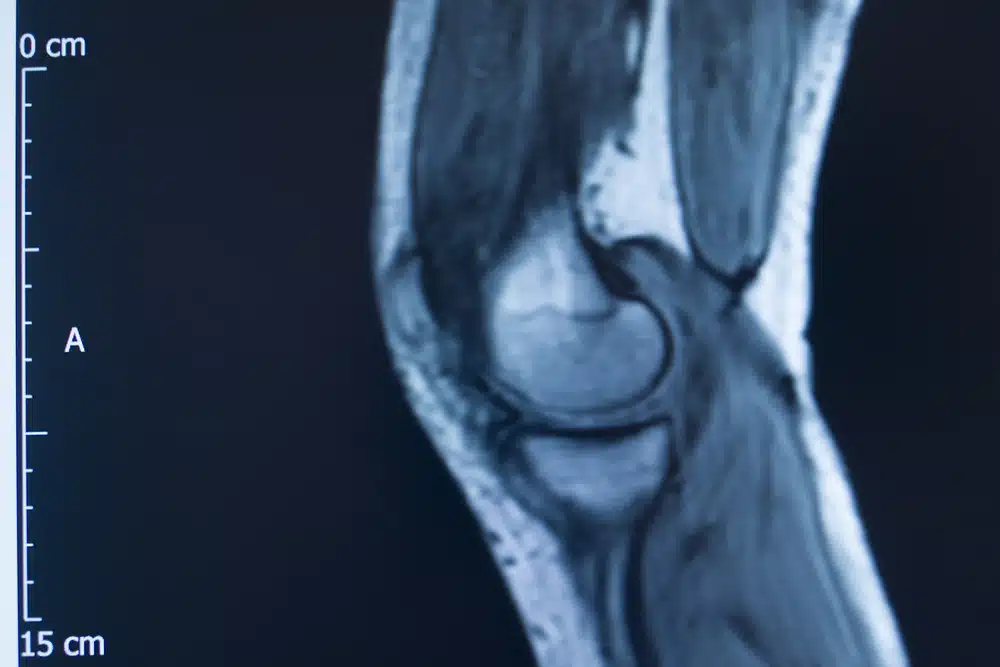Article At A Glance
- An MRI diagnosis helps doctors see sports injuries that an ultrasound can’t pick up.
- MRI interpretation and diagnosis are vital to the treatment and recovery of many sports injuries.
- Open MRIs allow for more patient comfort and accessibility than traditional MRI imaging.
If you have an injury from playing sports, your doctor will need as much information about your condition to create a treatment plan. Medical professionals often use diagnostic imaging to see patients’ tissues, locate the source of the damage, and evaluate the severity of their injuries. Getting an open MRI diagnosis can quickly lead you to recovery.
So what is an open MRI? How does it differ from a traditional MRI scan? Continue reading to learn how obtaining a medical diagnosis using MRI can benefit patients with sports injuries.
What to Know About Open MRI
MRI, or magnetic resonance imaging, is an advanced diagnostic test that allows doctors to see the body’s bones and soft tissues without surgery. It creates images using a powerful magnetic field and radio waves. Unlike ultrasounds, an MRI scan can pick up on these types of sports-related injuries:
- Nerve damage
- Muscle tears
- Meniscus tears
- Cartilage damage
A standard MRI machine is a long tube with a small space for the patient to lie in. After the patient slides into the cylinder, the machine will take detailed scans of the patient’s body from head to toe if necessary.
Many people find traditional MRI machines too small and claustrophobic. Yet, an open MRI diagnosis eliminates the need for long cylindrical equipment.
Instead, patients can lay on a wider bed that’s open on all sides. With open MRI, the magnets are above and below the patient instead of surrounding them.
Who Benefits From Open MRI Scans
Most people can undergo an open MRI scan to diagnose their sports injuries including those with metal implants. Still, your medical provider will ask questions about your medical history and injury to ensure the diagnostic imaging will be safe for you to do.
Unfortunately, weight and size can be a problem for standard MRI machines because the size of the narrow tunnel isn’t adjustable. Since the bed is larger with an open MRI than what’s part of the traditional option, larger patients can easily get an MRI imaging diagnosis.
People may feel claustrophobic in traditional MRI machines, but open MRIs, which have no enclosed spaces, are a better option.
An open MRI is ideal for detecting various sports injuries to the musculoskeletal system, like bone fractures, soft tissue tears, and degenerative conditions such as osteoarthritis. The machine can scan different areas of the body including:
- Shoulders
- Spine (cervical, thoracic, and lumbar)
- Elbows
- Hips
- Hands
- Knees
- Sacroiliac joint
- Ankles
- Feet
Benefits of an Open Magnetic Resonance Imaging Diagnosis for Common Sports Injuries
The advantages of an open MRI are plentiful. They include the following:
- Full-Body Assessments: Since open MRIs can scan your body from head to toe, they’re ideal for diagnosing multiple sports injuries in one patient.
- Works Well for Pediatric Diagnosing: Young people with sports-related injuries often find standard MRI machines scary. However, the open variety can alleviate fear and anxiety in young patients and allow for their guardians to be at their side if necessary.
- More Comfort and Accessibility for Patients: Open MRIs aren’t restrictive or invasive. People of all sizes can get accurate scans while lying comfortably or in a position miming their movements when playing their sport.
- Displays Clear Images: An MRI diagnosis is reliable because the scans produce clear images of the body’s bones and soft tissues. The open MRI’s milder magnetic field won’t compromise the images even if you have a metal component in your body from a previous injury or surgery.
- Dynamic Imaging: With dynamic imaging, you won’t have to lie flat on your back for scans. You can be in different positions or weight-bearing postures to help the images show abnormalities that static imaging wouldn’t detect.
How an Open MRI Imaging Diagnosis Aids in Sports-Related Injuries
With an open MRI scan diagnosis, you can start your path to recovery from a sports injury in several ways:
- Diagnosis: Orthopedic specialists and physicians use open MRI to quickly and accurately diagnose sports injuries.
- Monitoring: The scans can monitor healing, allowing medical providers to adjust treatment.
- Rehabilitation: Open MRIs can guide rehabilitation exercises to ensure you don’t overwork your body.
Find Outstanding Care for Your Sports Injury at Orthopedic Specialists, S.C.
An MRI diagnosis will help your orthopedic team create the best treatment plan for your sports-related injury. Whether the injury is in your shoulder, hip, or knees, you can count on our Orthopedic Specialists, S.C. professionals to provide accurate diagnostic MRI services using traditional and open MRI imaging methods.
Our staff serves patients throughout Elmhurst, Illinois, and the surrounding areas. Call (630) 782-9600 today to schedule an appointment.

